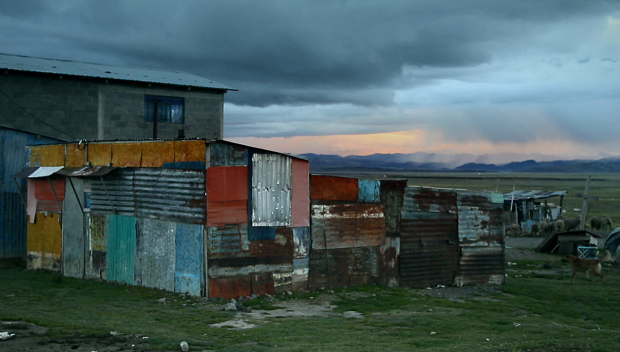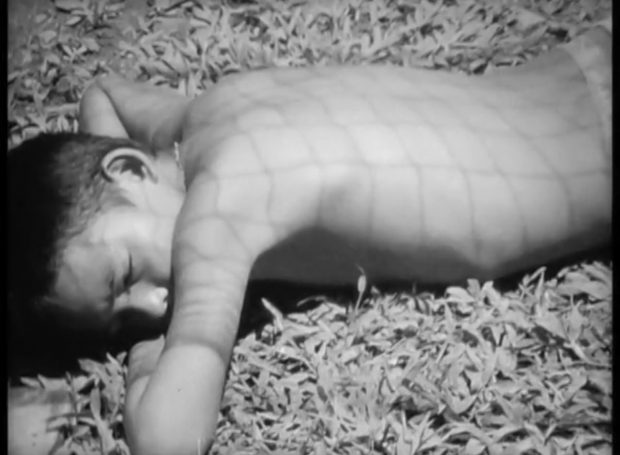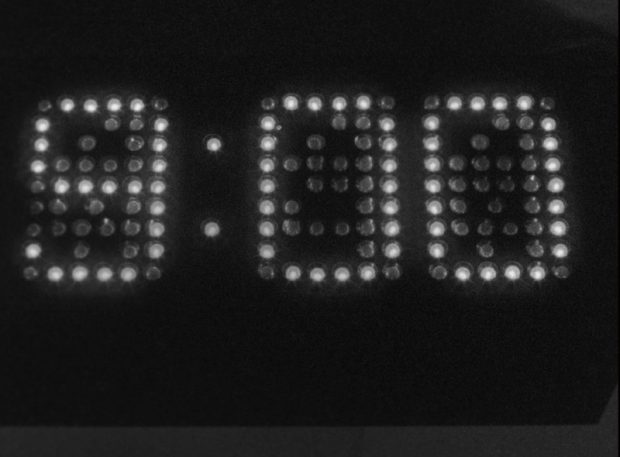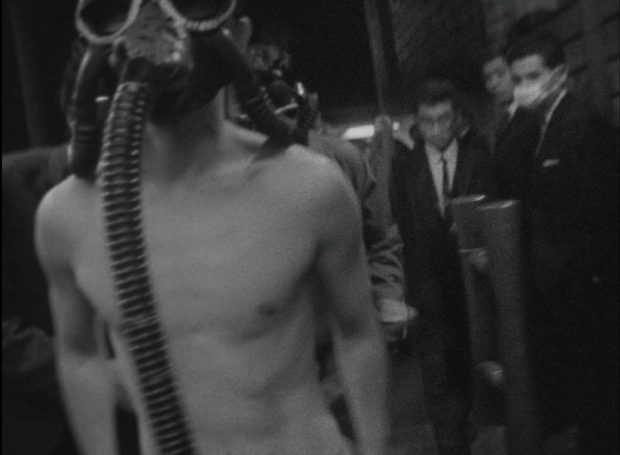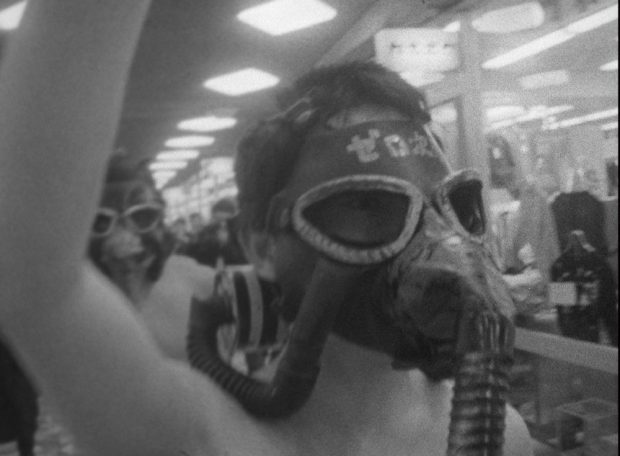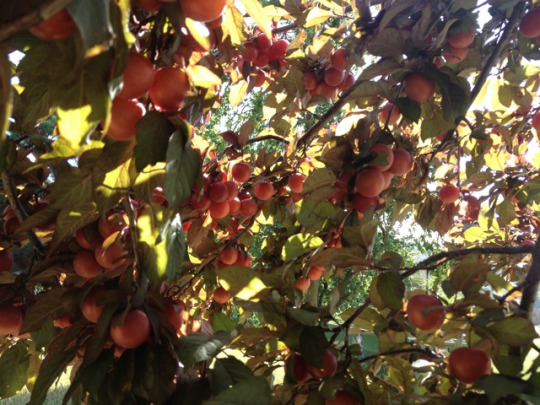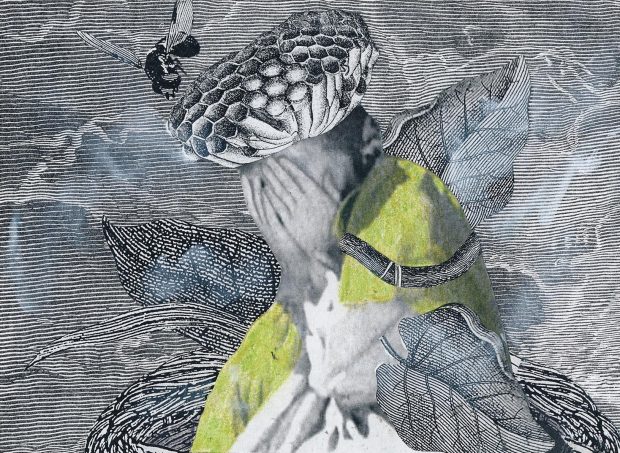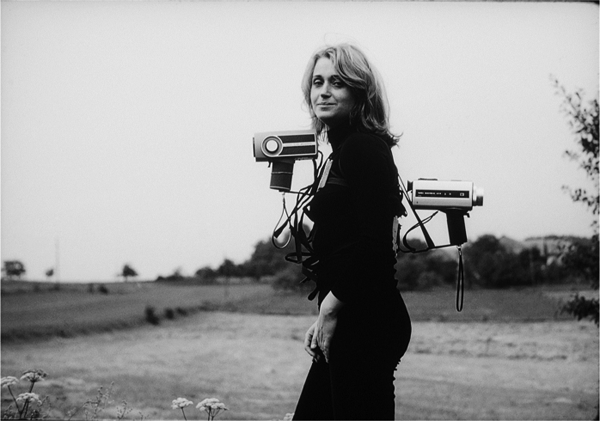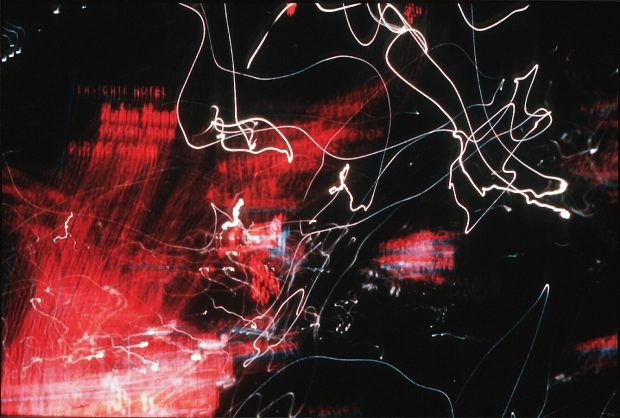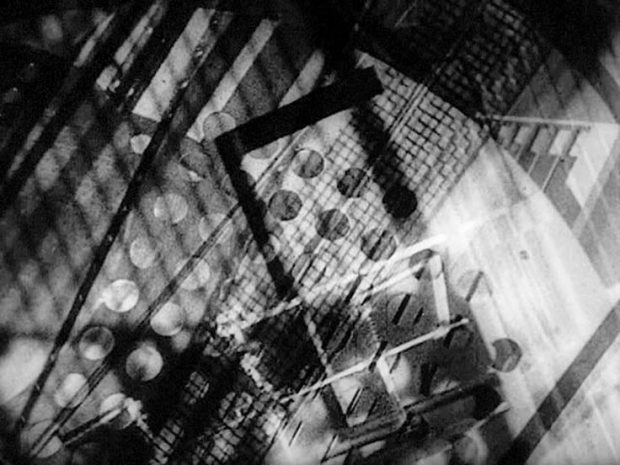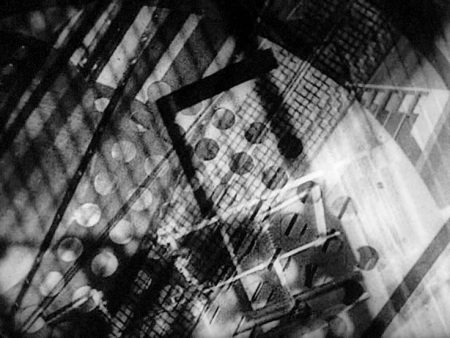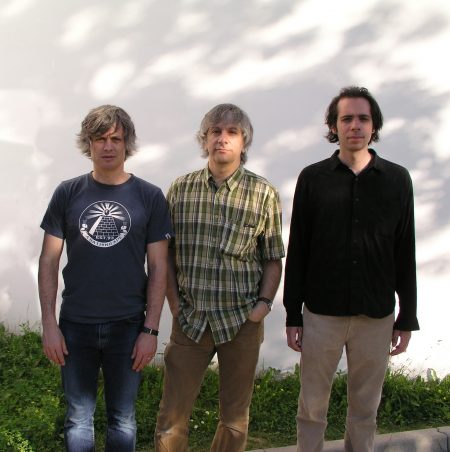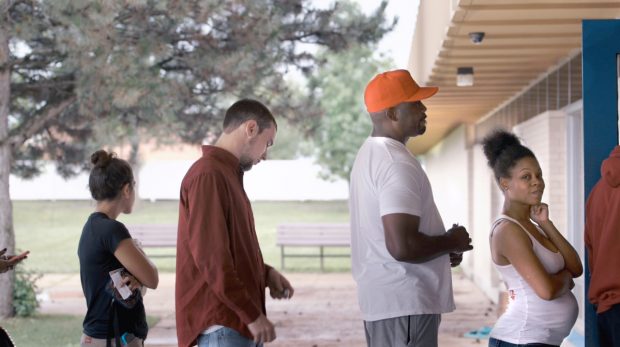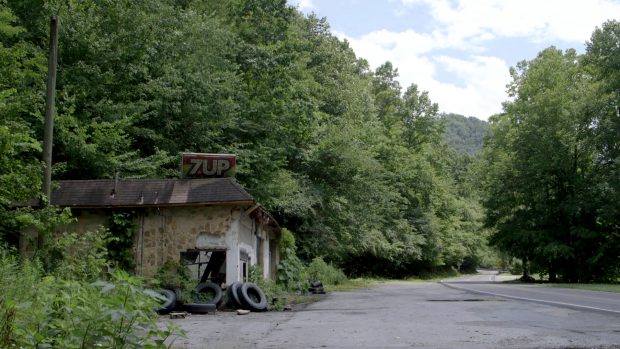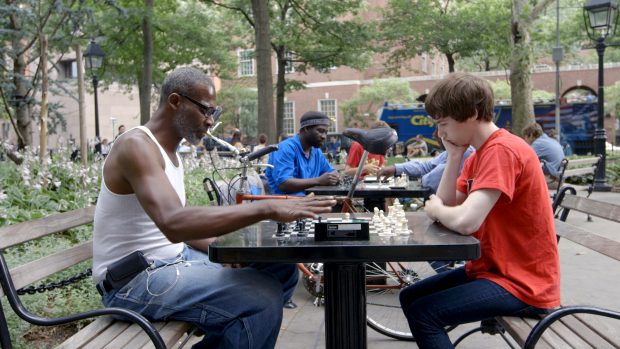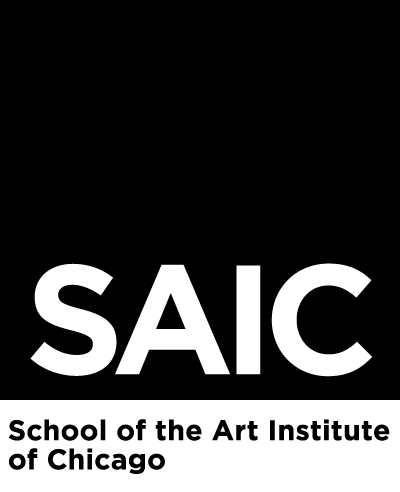On Against Ethnography
Posted by | Paris Jomadiao | Posted on | February 17, 2017

Vincent Carelli and Dominique Gallois, still from Meeting Ancestors, 1993. Courtesy of the Video Data Bank.
We are excited to present Against Ethnography, a program of contemporary videos from Latin America which charts the limits of communication between indigenous and non-indigenous worlds. Curated by film scholar Federico Windhausen, this program was originally put together as part of a larger series for the Oberhausen International Short Film Festival titled El Pueblo: Searching for Contemporary Latin America.
To contextualize our screening, we’re featuring Windhausen’s essay for the El Pueblo series below.
Federico Windhausen is a film scholar and curator based in Buenos Aires. He has presented film programs at venues such as TIFF Bell Lightbox, the London Film Festival, the San Francisco Cinematheque, UnionDocs, and Anthology Film Archives. In 2014 he led the first Oberhausen Seminar, and in 2016 he curated the International Short Film Festival Oberhausen’s Theme program. His writing has been published in journals such as Moving Image Review & Art Journal.
El Pueblo
Searching for Contemporary Latin America
Federico Windhausen
In Latin American political discourse, the notion of el pueblo is a multidimensional one, referring to entities both extensive and reduced: the entire region, the people of a nation, the common people, and the village. Writing of the ‘heterogeneity of the concept of pueblo (…) a phenomenon that is hemispheric in scope but embedded locality’, one historian of Latin America has noted that ‘particular references to el pueblo may not correspond to a neat definition of that term, as either place or people or political abstraction’ (Paul Eiss: ‘In the Name of El Pueblo’, Duke University Press, 2010). For another historian, the term ‘blends notions of the people and the community in ways that makes it a common referent, often debated, and always changing.’ (John Tatino: ‘Communities Making Histories’, A Contracorriente, Winter 2012). It is a concept as frequently invoked as it is subject to recalibrations and resignifications.
February 16 – Against Ethnography
Posted by | Amy Beste | Posted on | February 10, 2017
Curated by Federico Windhausen, this revealing program of contemporary videos from Latin America charts the limits of communication between indigenous and nonindigenous worlds. Vincent Carelli and Dominique Gallois’ Meeting Ancestors / A arca dos Zo’é (Brazil, 1993) follows an Amazonian tribal leader who makes videotapes to share stories about the past and dangers of encroaching development. Vicente Cueto records villagers identifying the recently unearthed clothing of victims of Peru’s 1980s internal armed conflict in Raccaya Umasi (Peru, 2015). And, in the elegiac Contornos (Peru, 2014), Ximena Garrido-Lecca meditates on the loss of history and geography in the Andean mining city of Cerro de Pasco. Also on the program are Bilingüe (Leticia Obeid, Argentina, 2013) and Tropic Pocket (Camilo Restrepo, Colombia, 2011). Spanish, Portuguese, Wichí, and Tupi with English subtitles.
1993–2015, Argentina/Brazil/Colombia/Peru, multiple directors, multiple formats, ca 76 min + discussion
Curator Federico Windhausen in person
Federico Windhausen is a film scholar and curator based in Buenos Aires. He has presented film programs at venues such as TIFF Bell Lightbox, the London Film Festival, the San Francisco Cinematheque, UnionDocs, and Anthology Film Archives. In 2014 he led the first Oberhausen Seminar, and in 2016 he curated the International Short Film Festival Oberhausen’s Theme program. His writing has been published in journals such as October, Moving Image Review & Art Journal, and Grey Room. Currently he is editing A Companion to Experimental Cinema and writing a book on Argentine experimental film.
Tags: Camilo Restrepo > Dominique Gallois > Ethnography > Federico Windhausen > Latin America > Leticia Obeid > Vicente Cueto > Vincent Carelli > Ximena Garrido-Lecca
On Rikurō Miyai
Posted by | Paris Jomadiao | Posted on | February 9, 2017
We are excited to kick off our spring 2017 season this week with a rare expanded film performance by Japanese underground filmmaker Rikurō Miyai!
Expanded cinema describes a form of practice that emerged in the 1960s involving the film projector being used as a performative instrument. Existing between film, performance and installation art, it questioned the conventions of the film-viewing experience by activating the inherent qualities of cinema usually neglected in commercial filmmaking.
To read more about this practice and works of other artists like Miyai, we’re linking to scholar and curator Julian Ross’s dissertation, Beyond the Frame: Intermedia and Expanded Cinema in 1960s-1970s Japan. Ross has put together numerous programs exploring Japanese avant-garde film from this period and is one of the curators for our show with Miyai.
Read Ross’s dissertation here.
Julian Ross is a scholar, programmer, and curator. He is a Postdoctoral Research Fellow at the University of Westminster on a Leverhulme Early Career Fellowship. He received his PhD at the University of Leeds. His research focuses on Japanese expanded cinema, a topic on which he co-curated a film and performance series at Tate Modern and International Film Festival Rotterdam (IFFR) of which he serves on the selection committee. He has curated additional film programs at the Eye Film Institute/Amsterdam, the British Film Institute, and the Anthology Film Archives. He has served as assistant curator for the touring program on the Art Theatre Guild of Japan. His writing has appeared in Film Comment, Aesthetica Magazine and Post (MoMA).
Tags: expanded cinema > experimental cinema > film theory > Japan > Julian Ross > Rikurō Miyai
February 9 – Rikurō Miyai’s Expanded Cinema
Posted by | Amy Beste | Posted on | February 3, 2017
The Art Institute of Chicago, Chicago Stock Exchange Trading Room
Modern Wing Entrance, 158 East Monroe Street
Free, registration required (see saic.edu/cate for details)
A central figure in Japan’s 1960s underground, Rikurō Miyai’s expansive, pop-infused practice spans filmmaking, art criticism, design, and television. In this rare US appearance, he presents two of his best-known works of expanded cinema. In the double-projected Phenomenology of Zeitgeist (1967), Miyai layers ghostlike footage of unauthorized street performances in the Shinjuko district of Tokyo with color filters and lights. In Shadow (1968), he projects two films of his own shadow walking outdoors side-by-side—one positive, one negative—each a reflection of the other. The Chicago-based multi-instrumentalist and media artist Tatsu Aoki (BFA 1983, MFA 1985) joins Miyai for this special appearance, performing with his group Reduction Ensemble, featuring cellist Jamie Kempkers, guitarist Ramy Atassi, percussionist KIOTO, and Edward Wilkerson on woodwind.
Curated with Go Hirasawa and Julian Ross and presented in collaboration with the Mary and Leigh Block Museum of Art and the Art Institute of Chicago in conjunction with the exhibition Provoke: Photography in Japan between Protest and Performance, 1960–75.
1967–2017, Japan/USA, 16mm, video, live performance and music, ca 60 min.
Rikurō Miyai is a filmmaker and critic. He studied film through the Association of Documentary Filmmakers while a student at Waseda University. Influenced by Andy Warhol and Japan’s 1960s “shadow debate,” about the growing indistinguishability between object and its image, Miyai turned toward increasingly complicated expanded cinema and environmental works, playing an important role in the development of Japanese intermedia. In addition to his expanded cinema works, he worked as a model, served as a critic for the journals Eizō Geijutsu and Kikan Firumu, advised on television programs and magazines, designed discotheques and headed Unit Productions, an independent film company set up in his apartment in Shinjuku.
Tatsu Aoki is a leading advocate for the Asian American community, a prolific composer and performer of traditional and experimental music forms, and a filmmaker and educator. He has produced more than 30 experimental films and is one of the most in-demand performers of bass, shamisen, and taiko, having contributed more than 90 recording projects and touring internationally during the last 25 years. In the early 1970s, Aoki was active in Tokyo’s underground arts movement as a member of Gintenkai, an experimental ensemble that combined traditional music and new Western forms. In the same period, he began making small-gauge and experimental films. In 1977, Aoki left Tokyo to study experimental filmmaking at SAIC. In 2001, the Asian American Institute awarded Aoki the Milestone Award for his contribution to Chicago-area arts. In 2010, he received the Japan America Society of Chicago’s Cultural Achievement Award as well as a 3Arts Artist Award. He received the “Living in our Culture” award by the Japanese American Service Committee in 2014 and Jazz Heroes’ Award by National Jazz Journalist Association in 2015. In 2016, his Miyumi Project ensemble was chosen as the official musical presenters for the unveiling of Yoko Ono’s first permanent installation in North America, Sky Landing, in Chicago’s Jackson Park. The group also recorded the album Sky Landing, produced by Yoko Ono. Aoki is Adjunct Professor in the Departments of Film, Video, New Media, and Animation and Art History, Theory, and Criticism at SAIC and a visiting professor at Northwestern University. He is also the founder and artistic director of the Chicago Asian American Jazz Festival and president of San Francisco–based Asian Improv Records (AIR).
Tags: audiovisual performance > Edward Wilkerson > expanded cinema > Jamie Kempkers > Japan > KIOTO > Ramy Atassi > Rikurō Miyai > Tatsu Aoki
Announcing Spring 2017
Posted by | Paris Jomadiao | Posted on | January 25, 2017
We’re excited to announce the full lineup for Conversations at the Edge’s Spring 2017 season! Guests include Rikurō Miyai alongside Tatsu Aoki, film scholar Federico Windhausen, Nathaniel Dorsky, Stacey Steers, a film by Isaac Julien & Maureen Blackwood, Sky Hopinka, Hyphen-Labs, Melika Bass, Wael Shawky, and VALIE EXPORT.
Check out full season details here.
Spring 2017 Sneak Peek
Posted by | Paris Jomadiao | Posted on | January 13, 2017
We’re thrilled to announce that our Spring 2017 season kicks off February 9 with an appearance by legendary Japanese underground filmmaker Rikurō Miyai alongside Chicago-based multi-instrumentalist and multimedia artist Tatsu Aoki! Additional highlights include appearances by artists Nathaniel Dorsky, Stacey Steers, and VALIE EXPORT, among many others. Watch for our full season line-up next week!
On Text of Light and Films by László Moholy-Nagy
Posted by | Paris Jomadiao | Posted on | November 30, 2016
This week, we welcome back graduate student, Mev Luna, to conclude our Fall 2016 season with some thoughts on László Moholy-Nagy’s films and experimental music group, Text of Light.
Line. Movement. Composition. Transparency. Layered forms. All of these adjectives can be applied to the large breadth of work by László Moholy-Nagy (1895–1946), as seen in his recent retrospective at the Art Institute of Chicago, Future Present. They are most pointedly expressed in a series of films he made in the late 1920s and early 1930s.
In Marseille Vieux Port (1929), we enter the city through a map, a composition of criss-crossing, parallel, and perpendicular lines of various thicknesses. The map is punctured by a pair of scissors and becomes a view hole to footage of the city. The relationship of these collaged elements–that the city is an extension of the lines on the map, and conversely, that the map is a representation of the city– highlight the correlation between image and signifier. In the way that the line lends itself to the representation of streets, there is an inherent geometric nature to the metropolis, which yields these diagrams that have a strong relationship to formal compositions. In this way, Moholy-Nagy primes the viewer in his approach to the film. The metropolis, is a dynamic space when activated through Moholy-Nagy’s film becomes a study of light, composition and form.
In Berlin Still Life (1932), Moholy-Nagy’s sensibility towards the subjects in this film–be they architectural, human, or animal– is equally weighted. The camera follows the sidewalk patterns as much as the feet walking on them. It gazes down at a smiling toddler, and yet later repeats the same composition with a similarly bemused alley cat. Much of the film is shot from above, watching the city over the ledge of a building and skewing the frame. But the camera is also autonomous, moving through alleyways, busy streets, and gazing up in as steep an angle as when it looks down. Moholy-Nagy’s use of jump cuts reminds the viewer that the film is as much about the composition of each shot, as it is about its subjects. A sort of look here. No, not just at that person walking, look at the archway, the stacking of the repeated pattern of light, shadow, light, shadow, from the sun casting it’s way between the buildings that share this tunnel. The film ends with a street vendor selling windup pigeons, an unusual reference to the intersection of life and technology at the time, but nonetheless a strong indication of Moholy-Nagy’s own interest in these subjects.
In Light-Play: Black-White-Gray (1930), made by filming the reflections and refractions of light through his kinetic sculpture, Light Prop for an Electric Stage, the first image features the words “Moholy-Nagy zeit” printed on a translucent spinning sphere. In this initial instance, the filmmaker places himself as part of the machine, an appropriate place for this innovator and artist that regarded design as “the integration of technological, social, and economical requirements, biological necessities, and the psychological effects of materials, shape, color, volume and space.” As if revealing cinema’s relationship to these properties, the next frame is light pouring through a roll of film and casting layered shadows as the artist manipulates its form, bending and wrapping it around itself. From there we are quickly whirled into a kinetic composition of shadows, geometric shapes, and lines that seem to collapse in and out of flatness. These forms reconstitute themselves through the employment of double exposure and motion, embodying the interdisciplinarity of Moholy-Nagy’s artistic and design practice.
Seven years after making this film, and and four years after Bauhaus was closed, László Moholy-Nagy relocated to Chicago, where he became the first director of New Bauhaus. The New Bauhaus (eventually renamed the Institute of Design) was founded to bring the principles of the Bauhaus to North America. There, Moholy-Nagy rethought the Bauhaus’s original curriculum, adding photography, filmmaking, music, and poetry. It’s only appropriate that for this special screening, the experimental music group Text of Light will accompany these films. Founded by Lee Ranaldo of Sonic Youth and Alan Licht in 2001, the group will be joined by percussionist Tim Barnes of Silver Jews. Together, these musicians layer sound, creating an improvisational soundscape for Moholy-Nagy’s radical imagery.
Tags: 2016 > Abstract > Alan Licht > Art Institute of Chicago > audiovisual performance > Experimental Music > László Moholy-Nagy > Lee Ranaldo > Non-Fiction > Tim Barnes
Thursday, December 1 – Text of Light and films by László Moholy-Nagy
Posted by | Amy Beste | Posted on | November 18, 2016
The Art Institute of Chicago, Rubloff Auditorium (please use Modern Wing entrance, 159 E. Monroe Street)
FREE, registration required. Register here.
Film and photography played central roles in the work of pioneering artist and designer László Moholy-Nagy, who experimented with light, abstraction, and staccato montage throughout his career. For this program, the improvisational group Text of Light, led by guitarists Lee Ranaldo and Alan Licht, performs alongside a selection of Moholy-Nagy’s radically inventive works including the spectacular Lightplay: Black-White-Gray (1930) and Berlin Still Life (1932), a portrait of the city’s economic climate in the years leading up to World War II. Joined by percussionist Tim Barnes, the musicians layer guitar, effects, and low-grade feedback, playing off one another to generate new aural spaces and insight to Moholy-Nagy’s visionary work.
1929–2016, Germany/France/USA, multiple formats, ca 50 min
Presented in collaboration with the Art Institute of Chicago in conjunction with Moholy-Nagy: Future Present.
Text of Light (2000) is a collective of experimental musicians who perform live, improvised scores to works by American avant-garde filmmakers, primarily of the 1950s and ‘60s. The group has performed at the Victoriaville Music Festival, Canada; Three Rivers Film Festival, Pittsburgh; Walker Art Center, Minneapolis; Centre Georges Pompidou, Paris; and the Whitney Museum, New York; and toured Europe in addition to playing various clubs and cinemas in New York and elsewhere. Founded by Lee Ranaldo and Alan Licht, members of the group have included Christian Marclay, DJ Olive, William Hooker, Ulrich Krieger, and Tim Barnes.
László Moholy-Nagy (b. 1895, Borsód, Austria-Hungary; d. 1946, Chicago) was an abstract painter, designer, typographer, photographer, filmmaker, and theorist who believed in the integration of technology and industry into the arts. He was an influential professor at the Weimar and Dessau Bauhaus and established the highly influential Institute of Design in Chicago. His posthumous exhibitions include In Memoriam: László Moholy-Nagy, the Museum of Non-Objective Painting, New York (1947); László Moholy-Nagy, Museum of Contemporary Art, Chicago, and Solomon R. Guggenheim Museum, New York (1969); László Moholy-Nagy, Instituto Valenciano de Arte Moderno Centre Julio Gonzalez, Valencia, Spain (1991); Technical Detours: The Early Works of Moholy-Nagy Reconsidered, Art Gallery of the CUNY Graduate Center, New York (2006); Laszlo Moholy-Nagy: Retrospektive, Schirn Kunsthalle, Frankfurt (2010); Moholy-Nagy: El arte de la Luz, Circulo de bellas artes, Madrid (2010); and Moholy-Nagy: Future Present, Solomon R. Guggenheim Museum, New York, Art Institute of Chicago, and the Los Angeles County Museum of Art (2016–17).
Tags: 2016 > Abstract > Alan Licht > Art Institute of Chicago > audiovisual performance > Experimental Music > László Moholy-Nagy > Lee Ranaldo > Non-Fiction > Tim Barnes
On Brett Story
Posted by | Paris Jomadiao | Posted on | November 15, 2016
We are thrilled to present writer & filmmaker Brett Story’s film, The Prison in Twelve Landscapes, an absorbing meditation on the unexpected ways prison shapes lives and landscapes far beyond its walls. To accompany the film, Story recommends the following five books on carceral geography: an approach to analyzing incarceration and policing in spatial terms, drawing from the discipline of human geography. For Story’s detailed analysis of each book, please visit the original post on the Verso Books’ Blog.
Five Book Plan: Carceral Geography
- Golden Gulag: Prisons, Surplus, Crisis and Opposition in Globalizing California by Ruth Wilson Gilmore (University of California Press, 2007)
- Progressive Punishment: Job Loss, Jail Growth, and the Neoliberal Logic of Carceral Expansion by Judah Schept, (New York University Press, 2015)
- Solitary Confinement: Social Death and its Afterlives by Lisa Guenther (University of Minnesota Press, 2013)
- The London Hanged: Crime and Civil Society in the Eighteenth Century by Peter Linebaugh (Verso Books, 1991/2006)
- Incarcerating the Crisis: Freedom Struggles and the Rise of the Neoliberal State by Jordan T. Camp (University of California Press, 2016)
Tags: 2016 > Brett Story > carceral geography > Cinema > Documentary > film > reading list
Thursday, November 17 – Brett Story: The Prison in Twelve Landscapes
Posted by | Paris Jomadiao | Posted on | November 11, 2016
“An impressive, genre-subverting work” —Filmmaker magazine
The Prison in Twelve Landscapes, by the award-winning filmmaker and geographer Brett Story, is an absorbing meditation on the unexpected ways prison shapes lives and landscapes far beyond its walls. Shot across the United States, the film highlights ordinary places tied to the penal system by location, family, and economy: a California mountainside where female prisoners fight the region’s raging wildfires, a Bronx warehouse producing inmate care packages that adhere to New York’s arcane regulations, and an Appalachian coal town betting its future on the promise of prison jobs. Together these vignettes raise important questions about race, power, poverty, and the complex systems that sustain mass incarceration.
2016, Canada / USA, DCP, 87 min + discussion
Brett Story (b. London, England) is a writer and nonfiction filmmaker based out of Toronto and New York. Her first feature-length film, the award-winning Land of Destiny (2010), screened internationally and was broadcast on both Canadian and American television. Her journalism and film criticism have appeared in such outlets as CBC Radio, the Nation magazine, and N+1. She was the recipient of the Documentary Organization of Canada Institute’s New Visions Award in 2014 and the Governor General’s Gold Medal for Academic Excellence in 2016. Story holds a PhD in geography from the University of Toronto and is currently a postdoctoral research fellow at the Center for Place, Culture, and Politics at the City University of New York Graduate Center.
« go back — keep looking »